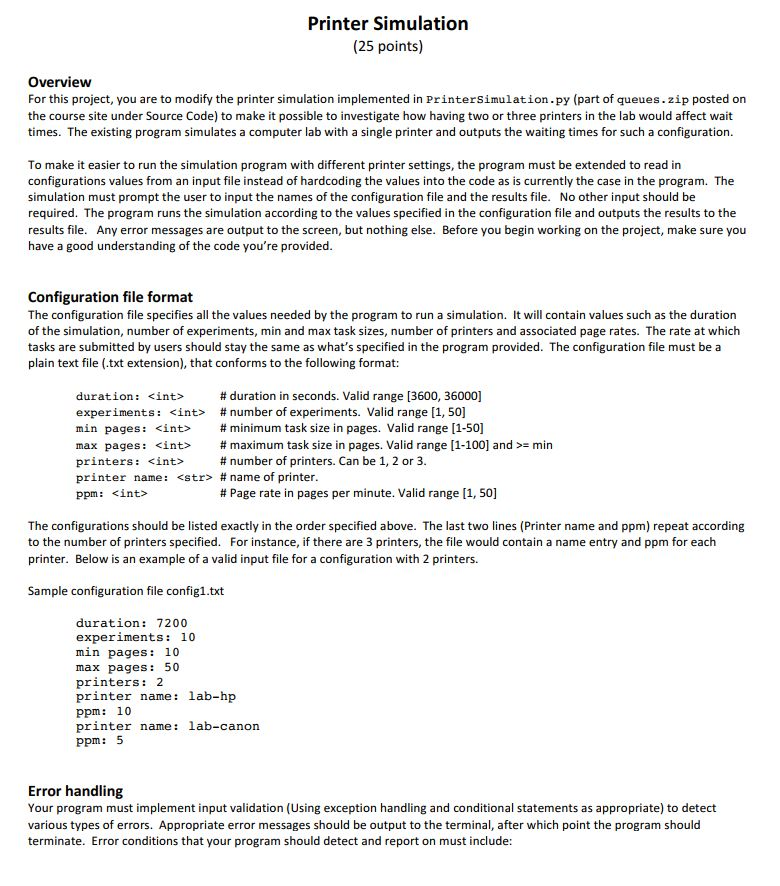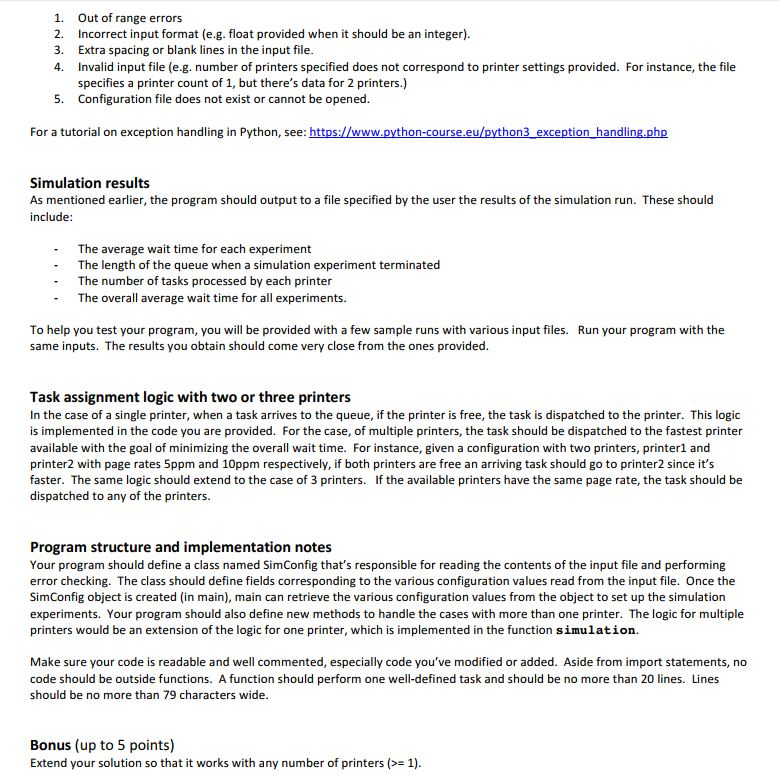Question
from Queue import Queue import random class Printer: def __init__(self, ppm): self.pagerate = ppm self.currentTask = None self.timeRemaining = 0 def tick(self): if self.currentTask !=
from Queue import Queue import random
class Printer: def __init__(self, ppm): self.pagerate = ppm self.currentTask = None self.timeRemaining = 0
def tick(self): if self.currentTask != None: self.timeRemaining = self.timeRemaining - 1 if self.timeRemaining
def busy(self): if self.currentTask != None: return True else: return False
def startNext(self,newtask): self.currentTask = newtask self.timeRemaining = newtask.getPages() * 60/self.pagerate
class Task: def __init__(self,time): self.timestamp = time self.pages = random.randrange(1,21)
def getStamp(self): return self.timestamp
def getPages(self): return self.pages
def waitTime(self, currenttime): return currenttime - self.timestamp
def simulation(numSeconds, pagesPerMinute):
labprinter = Printer(pagesPerMinute) printQueue = Queue() waitingtimes = []
for currentSecond in range(numSeconds): if newPrintTask(): task = Task(currentSecond) printQueue.enqueue(task)
if (not labprinter.busy()) and (not printQueue.is_empty()): nexttask = printQueue.dequeue() waitingtimes.append(nexttask.waitTime(currentSecond)) labprinter.startNext(nexttask)
labprinter.tick()
averageWait = sum(waitingtimes)/len(waitingtimes) print("Average Wait %6.2f secs %3d tasks remaining." \ %(averageWait, printQueue.size()))
def newPrintTask(): num = random.randrange(1,181) if num == 180: return True else: return False
def main(): # run simulation 20 times for i in range(20): simulation(36000, 15) if __name__ == "__main__": main()


Step by Step Solution
There are 3 Steps involved in it
Step: 1

Get Instant Access to Expert-Tailored Solutions
See step-by-step solutions with expert insights and AI powered tools for academic success
Step: 2

Step: 3

Ace Your Homework with AI
Get the answers you need in no time with our AI-driven, step-by-step assistance
Get Started


